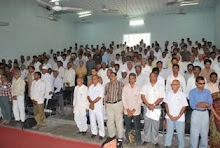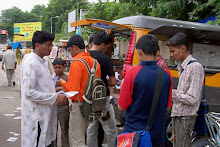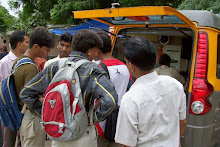Heritiage: Srilanka: Thursday, June 16, 2016.
I am Senior Research Fellow at The Heritage Foundation. The views I express in this testimony are my own and should not be construed as representing any official position of The Heritage Foundation.
I would like to take this opportunity to express my sympathy for the victims of the severe flooding and landslides which wracked Sri Lanka last month. My thoughts and prayers go out to the families of those who lost their lives in the disaster as well as those who lost their homes and other property. The people of Sri Lanka have demonstrated their strength and resilience in the face of terrible natural disasters in the past, and I have no doubt they will overcome this current crisis.
Introduction
There has been a rapid turn-around in U.S.–Sri Lankan relations in the past 18 months since President Maithripala Sirisena took power. Passage of the 19th amendment just a little over a year ago was a milestone on the path back to democracy. The democratic reform process is enabling closer relations between the U.S. and Sri Lanka, whose geographic position at the maritime crossroads of Asia and the Middle East has become more significant with China’s rise.
In addition, the Sri Lankan government’s decision to co-sponsor a U.N. Human Rights Council Resolution that called for post-war reconciliation and an investigation of alleged war crimes was a promising step, kindling hopes for a genuine accountability process that would help foster national unity and reconciliation. The human rights community noted that the adoption of the resolution could mark a turning point for human rights in Sri Lanka.[1]
However, nine months after the adoption of the U.N. resolution, there is concern that the human rights reform process has stalled, and that the government is squandering an opportunity to reconcile the country and address Tamil grievances in a way that ensures that Sri Lanka will never again become embroiled in civil war.
U.S.–Sri Lankan Relations: A New Chapter
U.S.–Sri Lankan relations have been on an upswing ever since Sri Lankan President Maithripala Sirisena defeated Mahinda Rajapaksa in the January 2015 election. Sirisena defected from Rajapaksa’s cabinet and ran against him on pledges to restore parliamentary democracy and rein in corruption. President Sirisena formed a coalition government with the opposition United National Party (UNP) led by Ranil Wickremesinghe and quickly made changes, including lifting media restrictions and allowing foreigners to travel to the war-torn northern part of the country. Five months after Sirisena took the helm, the Sri Lankan parliament passed Article 19 to curb the powers of the presidency by reinstating a two-term limit to the presidency, limiting the president’s ability to dissolve parliament, reviving the Constitutional Council, and establishing independent commissions to oversee the judiciary and police.
The U.S. has welcomed Sri Lanka’s return to parliamentary democracy. U.S. Secretary of State John Kerry’s trip to Colombo in May 2015 shortly after the historical vote to curb the powers of the presidency was the first visit by a U.S. Secretary of State to Sri Lanka in more than 40 years, marking a milestone in relations.
The results of parliamentary elections held in August 2015 further raised hopes that the country would continue down the path of reform and reconciliation. Sirisena cooperated with the UNP in the elections that brought Wickremesinghe to power as the new prime minister. The UNP and Sirisena’s faction of the Sri Lankan Freedom Party (SLFP) formed a unity government and signed an agreement to work together to draft a new constitution safeguarding the rights of all ethnic groups. Rajapaksa’s alliance, the United People’s Freedom Alliance (UPFA), won 95 of the total 225 seats in parliament, leaving him and his loyalists in charge of a powerful legislative bloc.
In a major departure from the former Rajapaksa government’s triumphalist attitude toward the 2009 defeat of the Liberation Tigers of Tamil Eelam (LTTE), the new Unity Government led by Sirisena and Wickremesinghe in September 2015 co-sponsored a U.N. Human Rights Council Resolution acknowledging that war crimes were committed by both the government and LTTE insurgents during the civil war. The resolution laid out a path toward a transitional justice process led by Sri Lanka with support and involvement from the international community.
In February of this year, Sri Lankan Foreign Minister Mangala Samaraweera visited Washington to inaugurate the first “U.S.–Sri Lanka Partnership Dialogue.” The dialogue focused on governance, development cooperation, and people-to-people ties. The Joint Statement released on February 29, 2016, noted Sri Lanka’s “pivotal geo-strategic location within the Indian Ocean Region” and called for strengthening maritime security cooperation. It further expressed U.S. support for constitutional and legislative reforms in Sri Lanka, including the repeal of the Prevention of Terrorism Act, and called on the government to return lands in the north to the original owners (some 64,000 acres reportedly remain under military control).[2] Samaraweera’s visit to Washington followed a series of senior U.S. trips to Colombo, including U.S. Permanent Representative to the United Nations Samantha Power in November 2015, and Under Secretary of State for Political Affairs Thomas Shannon last December.
As a further sign of warming U.S.–Sri Lankan relations, the State Department’s Directorate of Defense Trade Controls (DDTC) announced on May 4 that licensing restrictions on defense exports to Sri Lanka had been lifted and that it will now review license applications on a case-by-case basis.[3] In 2008, the State Department amended the International Traffic in Arms Regulations (ITAR) to deny licenses for transferring defense equipment to Sri Lanka, except for items related to demining, disaster relief, and aerial and maritime surveillance.[4] The spending bill that included the changes also calls for funding to promote the redeployment and shrinking of the Sri Lankan military now that the civil war has ended.
The U.S. also announced in December 2015 that the Millennium Challenge Corporation’s (MCC’s) Board of Directors had chosen Sri Lanka to be part of a five-year “threshold program.” The MCC is an independent U.S. government agency established by Congress in 2004 that provides innovative grants and assistance to countries that demonstrate a commitment to good governance, investments in people, and economic freedom. A senior MCC official said the Sri Lankan program would provide an opportunity for the government to demonstrate its commitment to good governance and policy reform and to consolidate the gains made in these areas in 2015.[5]
In addition to re-establishing parliamentary democracy, lifting curbs on the media, and opening travel to the north, the Sri Lankan government has also welcomed international human rights organizations for visits to the country—a practice the previous Rajapaksa regime shunned. Human Rights Watch visited in October 2015 and Amnesty International traveled to the country in December 2015. The UN Working Group on Enforced or Involuntary Disappearances visited last November for the first time in 16 years. The government has also taken important symbolic steps, such as lifting the prohibition on singing the national anthem in Tamil.
Lifting of media restrictions includes ending censorship of dissident websites and no longer requiring foreign journalists to receive visa clearance from the Defense Ministry. The introduction in parliament in March of the long-awaited Right to Information (RTI) Act also represents a step forward in the reform process. The bill was originally drafted 14 years ago, but Rajapaksa refused to move it forward following his rise to power in 2005. The Act will force public authorities to ensure that citizens have access to information (as long as it does not endanger the country’s national security). Dr. Paikiasothy Saravanamuttu, executive director of the Sri Lanka-based NGO Center for Policy Alternatives, said that the RTI Act “could change the way people think of themselves as citizens and accordingly how politicians respond to them.”[6]
The cabinet also recently approved the establishment of an Office of Missing Persons, but some members of Sri Lankan civil society complain that they were not consulted about the move, and criticize the government for a lack of transparency in its efforts to establish transitional justice mechanisms.
Finally, the government has stated its commitment to adopting a new constitution that abolishes the executive presidency, adopts electoral reform, and strengthens provincial devolution. The first parliamentary steering committee meeting on the issue was held in early April. The Tamil National Alliance (TNA) supports a federal system of government, while Sinhalese nationalists support preservation of the country’s unitary status. Another major question is whether the northern and eastern provinces will be merged, as per wishes of the Tamil community, even though both Muslims and Sinhalese oppose the idea of combining the two provinces. Yet another controversial issue is whether the constitution will maintain language that essentially establishes Sri Lanka as a Buddhist state by vowing to “protect and foster” Buddhism.[7]
Steps toward devolution—which lie at the heart of the ethnic question—will be impossible unless the government engages in a major campaign to build public support for the constitutional changes, especially among the Sinhalese population in the south. Many Tamil observers doubt that the government is committed to pushing for such consequential changes, and believe, instead, that the push for constitutional reform may be a whitewash set up for failure.
Momentum Slows
While there has been notable progress on democratic reform in Sri Lanka since Sirisena took power, some of the momentum on establishing a reconciliation process has stalled in recent months. There is a growing feeling among the Tamils that the government has started to drag its feet on setting up a credible domestic inquiry into alleged war crimes that meets international standards. There has been protracted argument about whether there will be international participation in such a panel. There is tremendous resistance from nationalists, who still hold a large chunk of parliamentary seats, to the idea of international judges determining the fate of Sri Lankan military officials.
The question of foreign participation in the accountability process will need to be addressed. President Sirisena and Prime Minister Wickremesinghe have both recently publicly came out against foreign participation in any accountability mechanism, even though the U.S. Ambassador to the U.N. Human Rights Council in Geneva, Keith Harper, has said that Sri Lanka must have foreign judges as part of the process. In late January, Sirisena told a BBC interviewer that he will not agree to foreign judges as part of the accountability process.[8]
Human rights activists also have questioned whether the U.S. is overestimating the level of change at the grassroots level and giving too much credit to the government when there are still major human rights concerns among the Tamil. In April, U.S. Permanent Representative to the U.N. Power said that Sri Lanka has emerged as a “global champion of human rights and democratic accountability.”[9] While U.S. officials should encourage the positive steps taken by President Sirisena and Prime Minister Wickremesinghe, they should temper their statements to match realities on the ground and acknowledge that a genuine reconciliation and accountability process will take time.
Foreign Policy
Another notable shift by the Unity Government has been in the country’s foreign policy orientation. Already mentioned was the outreach to the U.S. There has also been a marked shift toward better balancing relations between India and China.
There had been criticism of the Rajapaksa government’s cozying up to China and questions surrounding the large-scale infrastructure projects that were pursued during his tenure. The Rajapaksa regime had relied heavily on China for investment and military equipment. During the Rajapaksa years, China became Sri Lanka’s biggest donor, provided fighter jets, weapons, and radars to the Sri Lankan military, invested in a major $1.4 billion Port City Project in Colombo, and pledged to invest $1 billion to develop the port at Hambantota. Sri Lanka’s willingness to allow Chinese submarines to dock at Colombo’s port twice in late 2014 alarmed Indian officials, who are wary of China’s increasing influence in its backyard. India fears that Chinese investment in South Asian ports not only serves Chinese commercial interests, but also facilitates Chinese military goals.
Sri Lanka has toned down its relationship with China over the last 18 months. Shortly after his election, President Sirisena pledged to put ties with India, China, Japan, and Pakistan on equal footing—a significant departure from Rajapaksa’s pro-China policies. One UNP official went so far as to declare: “We will have a balanced approach between India and China, unlike the current regime, which was antagonizing India almost by its closeness to China.”[10] The Sirisena government also put on hold the massive Chinese Port City project, saying it would review the terms of the contract and evaluate how to make the project more transparent.
India warmly welcomed the change in the Sri Lankan regime and the apparent reorientation of its foreign policy. Last March, Indian Prime Minister Narendra Modi was the first Indian prime minister to make a bilateral visit to Sri Lanka since 1987. India recognizes that it is far behind China with regard to investment in Sri Lanka (India has loaned about $1.7 billion to Sri Lanka, compared to China’s $5 billion, over the last decade). To enhance bilateral economic ties, India is pushing a new trade pact with Sri Lanka called the Economic and Technological Cooperation Agreement (ETCA). India also has helped Sri Lanka deal with its current balance-of-payments crisis by providing a Reserve Bank of India credit swap worth $1.1 billion.
But China will continue to factor largely in Sri Lanka’s economic future as Prime Minister Wickremesinghe’s recent visit to Beijing demonstrated. During his visit in February, Wickremesinghe announced the resumption of the Port City Project and welcomed a Chinese proposal to develop a Special Economic Zone (SEZ) in Hambantota.[11] Sri Lanka needs Chinese infrastructure investment, and now that the country is facing a financial crunch, it cannot afford to alienate China, which it owes $8 billion in debt. One of the purposes of Wickremesinghe’s visit was to seek a swap of the $8 billion debt in exchange for Chinese equity stakes in Sri Lankan public-sector utilities and infrastructure projects.
The Sri Lankan government will likely maintain robust investment and economic ties with China, while backing away from actions that directly provoke Indian security concerns, such as allowing Chinese submarines to dock at Sri Lankan ports. Nonetheless, India will remain wary of Chinese strategic intentions toward Sri Lanka and its stated interest in making Sri Lanka a centerpiece of its Maritime Silk Road strategy.
China has managed to not just revive its flagship $1.4 billion Colombo Port City project, but it is now also engaged in expansion of major infrastructure projects it built in the past and which were seen as impracticable until recently.














































































